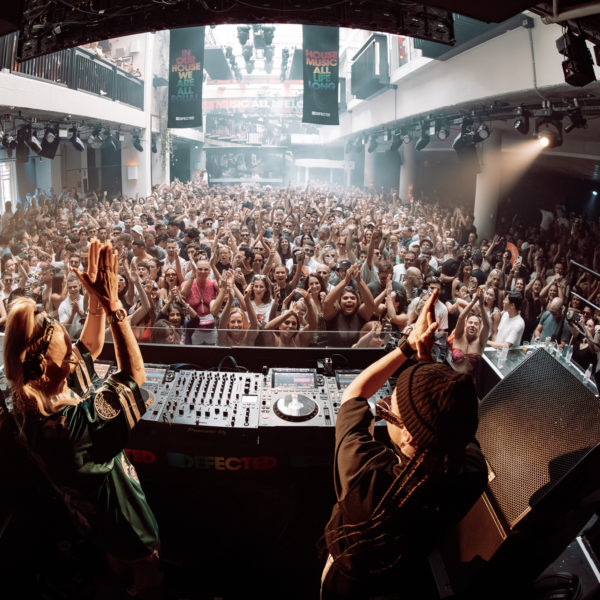“It’s not having Latin voices and sounds heard in a way that’s at least comparable to or proportional to the amount of sounds and contributions that we make.” Francisco Cornejo de Souza, or “Chico” to those who know him, was telling me about the formation of Latitudes, a new platform created to connect electronic music communities in Latin America.
Chico is well placed to make this case. He’s been involved with electronic music in the region since the ’90s, working, among many others roles, with the famed São Paulo club D-Edge and helping international brands like Red Bull and Dekmantel with projects in Brazil. In this time, Chico and others in the region had sadly grown accustomed to playing a secondary role in the narrative of global electronic music. But the events of the last couple years made it clear to him that something finally needed to change.
“When Resident Advisor came with their Save Our Scene thing, we saw that their attention to what they considered the Americas actually is just North America, if you count Mexico,” he said, referring to the site’s rallying campaign near the start of the pandemic. “It’s always insufficient. All of the efforts from people ‘up there,’ as we call the North, trying to at least include us in discussion and even in historiographies of electronic music—it’s always been very haphazard, piecemeal. So when Resident Advisor came up with that, it was something that was always felt but was very clear: we are out of the discussion, out of the conversation. We are only in the discussion as much as we are a target audience or a customer.”
Latitudes started by word of mouth. Chico, Juan del Valle from Yu Yu and Larissa Correia from Liminal set up a Telegram discussion group that included the Chilean-German artist Matias Aguayo, the Colombian DJ and activist Julianna and her colleagues Bitter Babe and Luisa Uribe from the ECO collective, and the Brazilian-Paraguayan artist Amanda Mussi. Informal conversations eventually developed into formal goals. They felt that connection and communication between the sprawling, disparate scenes of Latin America could, theoretically, be in everyone’s interests.
Latitudes could also act as a gateway between Latin American electronic music and the rest of the world. After discussions about how to execute their goals, a public event was planned, and talks became the most efficient format for presenting initial steps. Three core themes were outlined to introduce the challenges they faced: the precariousness of their scenes, the decolonisation of their scenes, and media coverage of their scenes.
“We’re still defining the way that we’re going to act, but the goals are there, the people are here,” Chico said. “We have people from Ecuador, people from Peru, Colombia, Chile, Argentina, Brazil—that covers a large chunk of the electronic music scene of South America. So we intend to go north. Central America is a place where we have no idea what’s going on there. You have some people from Costa Rica, El Salvador, Honduras—now we’re trying to recruit as many people as possible. That’s the basic challenge now.”
The scope of these nationalities is reflected in the range of music Latitudes will represent. House, techno, experimental club, dancehall, hip-hop, drum & bass and baile funk are some of the many sounds Chico mentioned during our conversation. There is, of course, no musical lingua franca here, although considerations of class seems to be a running theme through most music scenes in Latin America.
“You have these distinctions here in South America that you always have to be very attentive to,” Chico said. “Because there is always a class aspect to how sounds are incorporated. Gui Boratto is very different from DJ Marky. Different trajectories, different sounds, different audiences. It’s not a matter of just coming here and going just to a fluxo, which are like the funk parties in the ghetto… You have to also go to a very posh club. I think that’s the only way you can understand how the music is being made here.”
The Latitudes group estimates that local electronic music scenes in South America won’t be able to return to their pre-pandemic state. Chico talked about an historical over-reliance on international artists to attract an audience in the region, something that’s had a cost on the development of local talent. Exchange rates, travel restrictions and concerns about the environment will now make it very difficult to book foreign artists—possibly creating an opportunity. “It’s sad how we’ve ignored and downplayed talent that is just next door,” he said. “That’s a habit that we want to eradicate, or at least discourage its practice.”
“The craziest idea we could come up with would be an itinerant festival,” Chico said. “I don’t know why no one did it. Doing a Latitudes festival that comes with some touring artists from different places from Latin America and presents them could be something that might happen down the line.”
If this playlist Latitudes has put together is anything to go by, it would be some festival. I asked Chico if they could pick out ten or more artists for us and he initially sent over a spreadsheet with over 100 artists, collectives, events and labels, from nine different countries. My guess is that he wanted to demonstrate how difficult it is to be so selective—any list like this will at root be limited and reductive. But what’s here should hopefully offer a starting point. There are artists working within established templates, and those who take these templates and infuse them with traditional or indigenous sounds, creating distinctive local fusions. The playlist is, to use Chico’s words, “A polyphony of impressions, of sounds, of places.”





